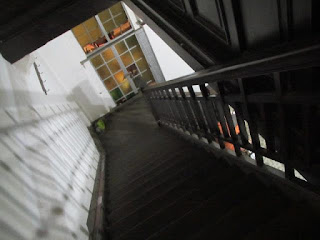"Princely Treasures: From the House of Liechtenstein" is an exhibition that I have been waiting for. This exhibition is held at the National Museum of Singapore from 27 Jun - 29 Sep 2013.
I was excited to be one of its first few visitors when the exhibition open to the public on 27 Jun 2013. There was a considerable number of visitors at the exhibition even though it was a Thursday morning.
The exhibition has caught my interest because it features a selection of 91 masterpieces from the Liechtenstein Collections. The collections contain major works of European art spanning five centuries. It is among the most important private collections in the world. Some of these masterpieces are representative examples of High Renaissance, Baroque, Neo-classical art styles.
Given that the opportunities to travel overseas to see original masterpieces by brilliant artists has yet to be very easy for the average Singapore citizen, the exhibition allowed visitors like myself to appreciate first-hand the works of great masters such as Raphael, Rembrandt, Peter Paul Rubens, Canaletto, Waldmüller and so forth, without having to travel out of Singapore. I am feeling very thankful that Liechtenstein, The Princely Collections, the National Museum of Singapore with the support of various sponsors have made works of important European artists accessible to the people living in the Singapore.
Compared to art styles such as Impressionism and Post-Impressionism, I am less familiar with art styles such as High Renaissance and Baroque. When I was visiting this exhibition, I was especially intrigued to realize how Renaissance and Baroque art has in some ways influence the way people think about visual art.
Raphael's Portrait of a Man was the only work by Raphael that was featured in this exhibition. Yet, from the placement of this work and the marketing material, it was clear that this was one of the masterpieces that is being featured in this exhibition. This is also one of the works in this exhibition that was imprinted strongly in my visual memory. Somehow, Raphael has the gift of immortalising the sitter. The use of bold colours in the sitter's dressing against an atmospheric background in this painting seemed to have made the image of the sitter in this painting stick vividly in my mind.
 |
| Raphael's Portrait of a Man. |
There are many other works in this exhibition that are worthy of mention. One of the works is Anthony Van Dyck's Portrait of Maria de Tassis. I was in awe at Van Dcyk's mastery of the art of portraiture. Notice how the lace and the folds of the fabric were being painted in Van Dyck's Portrait of Maria de Tassis and you are likely to be mesmerized like I was.
Accompanying this exhibition is a display of historical portrait paintings from Singapore's National Collection It was an interesting experience to compare and contrast the paintings from this section with the rest of the exhibition to appreciate the typical conventions of portrait painting between the late 19th century and mid 20th century.
It appears that Princely Treasures: From the House of Liechtenstein has a strong focus on portrait paintings. While this is possibly so, I do wish to stress that the artworks that are being exhibited in this exhibition ranges from paintings, prints, tapestries, sculptures to decorative art objects. Please do check out the decorative art objects in this exhibition. I have found a few of them extremely intriguing. I shall visit this exhibition again in the near future.
The guided tours will commence on 8 Jul 2013 (according to the exhibition's programme guide). Each guided tour will be limited to 15 participants per session on a first come, first served basis. The meeting point will be at the entrance to the exhibition galleries 1 and 2, at the basement of the National Museum of Singapore. The guided tours are subjected to the availability of the volunteer guides. Admission fee to the exhibition still applies. (Please take note that there will be no guided tours on 20 Jul, 21 Jul, 8 Aug, 9 Aug, 28 Sep and 29 Sep.)
Princely Treasures: From the House of Liechtenstein
27 Jun - 29 Sep 2013
National Museum of Singapore
93 Stamford Road
Singapore 178897
Opening hours: 10 a.m. - 6 p.m. daily.
Admission: $10 per adult


































.jpg)

.jpg)






